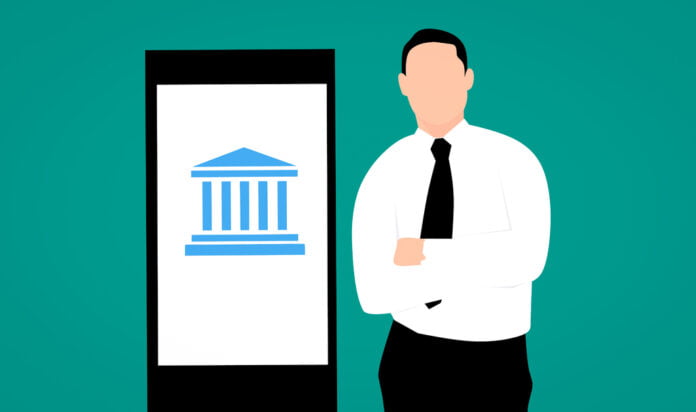Banks are increasingly producing apps for mobile devices such as smartphones and tablets that offer substantial functionality and eliminate the requirement for a computer and access to the bank’s official website. Users will be able to exchange currencies with a few clicks, keep track of transactions, contact technical support via chat right away, and avoid waiting in line until a financial organization’s manager is available.
From any location, the app allows users to track deposits, accounts, credit charges, and rates, as well as locate the bank’s nearest office or ATM. This will save you a lot of time because you won’t have to ask a question in a search engine.
You’ll need to know what technologies you’ll need, what laws you’ll have to deal with, and the scope and cost of development if you want to make a banking app. In this post, we’ll look at how much it costs to build a mobile banking app and what aspects affect expenses.
Features of a Mobile Banking Application
The cost of developing mobile banking apps is directly proportional to the number and complexity of features. Each element you want to include will raise prices, and the more labor-intensive or technologically unique the activities are, the higher the costs will be.
We’ll go through some of the most common features found in banking apps.
Registration
A financial app’s signup and onboarding process should be straightforward. The app would allow users to preserve their existing accounts or create new ones. To register, they will need to provide a bank account number (if they already have one) or their Social Security number, as well as personal information (name, date of birth). Before configuring their app preferences, they must first read and agree with the terms and conditions.
Authorization
User sign-ins should be exceedingly secure. You can use a PIN, a fingerprint, or face recognition to access your account. Banking apps can also use voice recognition and other biometric authentication methods. To make your app more secure, you can employ multi-factor authorization. The most common method is to send a code to consumers by SMS and ask them to input it in the app.
Account Management
Any mobile banking app must provide this feature. Users should be able to access and manage their bank accounts and information quickly (block or reissue a card, create a new account, etc.).
Payments
Consider all of the specific transfers that your users may require when developing mobile banking apps. It is appropriate to include the following:
• Templates for payment schedules: Because many payments are recurring, providing consumers with templates and the opportunity to schedule transactions ahead of time is helpful.
• Automatic email receipts: Users would save time if the banking app allowed them to send receipts via email.
Transaction History
On the transaction history screen, you must provide a lot of useful information while keeping it brief, such as the time and location of the transaction, the exchange rate if the payment was made in another currency, and so on. Add the ability to search for transactions by amount or recipient and to display transactions from a certain date range.
Digital Wallet Integration
Digital wallets are gaining popularity. According to a recent Visa study, 39% of small businesses accept digital payments, while a Finder survey found that 110 million Americans, or roughly a third of the population, have used digital wallets. Consider including payment systems like Google Pay, Apple Pay, Samsung Pay, Fitbit Pay, Garmin Pay, and others in your app.
Notifications
Account notifications must be received as soon as possible. Push alerts in a banking app can be used to notify users of transactions, promotions, and app upgrades. Users should be able to opt in or out of receiving email alerts about their account and in-app actions.
Cost of building a Mobile Banking Application
It’s difficult to estimate the cost of providing services to each consumer. The cost is defined by the amount of time and effort put in, the degree of complexity, the concept of the future application, the addition of new features, and the use of unique security codes.
On the other hand, the cost of a mobile banking app is determined by a number of factors, including:
• App complexity: The more features your banking app has, the more it will cost to develop, and vice versa.
• Collaboration style: You’ll have the option of working with freelancers, in-house teams, or multinational teams.
Freelancers will charge you less per hour, usually between $20 and $50. However, the work’s quality may not be up to scratch.
The results will be excellent thanks to an in-house staff of banking app developers. Their hourly pay, on the other hand, maybe in excess of $100.
It is entirely up to you if you want to save money by outsourcing your work to an international development organization. In addition, the work will be of the greatest caliber.
Conclusion
People no longer choose a bank only on the basis of its trustworthiness. These days, customers are more demanding than ever, and they prefer banks that make their lives easier. Apps have been created expressly for this purpose. A mobile app from your bank can make payments easier and faster than ever before. Blockchain and big data are two technologies that will upset next-generation financial systems, but for the time being, mobile banking will remain the focus.
Mobile app development costs might range from $10,000 to $1,000,000 or more, thus there is no such thing as an average. Financial apps, in our opinion, are complex and tough solutions that might cost upwards of $500,000, depending on the features, integrations, and technology used.





